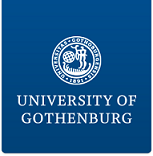

THE SAHLGRENSKA ACADEMY
Institute of Biomedicine, Dept. of Clinical Chemistry and Transfusion Medicine, Sweden
University of Twente, Dept. of Developmental BioEngineering, The Netherlands
Cartilage-adherent-hydrogel combined with human iPS cells with putative Osteoarthritis protection
This master project is a joint collaboration between the university of Gothenburg, Sweden and the University of Twente.
Osteoarthritis (OA) is a prevalent degenerative cartilage disease involving the erosion of articulating joint surfaces, subchondral bone changes and alterations in the synovium. Normally the articular cartilage is responsible for smooth and pain free bone movement in the joint. Its degeneration has a severe impact on the quality of life of affected individuals, particularly in terms of pain and physical functioning. Unfortunately, treatment options are limited and are still suboptimal.
The use of stem cells could be an option to treat this disease, but the use of autologous stem cells has several disadvantages. Because cartilage tissue is immune privileged due to lack of vascularization, a universal donor cell line, such as human embryonic stem cells (hESCs) or a human induced pluripotent stem cells (iPSCs), could putatively be used to replace the autologous cells. The Uiversity of Gothenurg created footprint-free chondrocyte-derived iPSCs (no virus and no integration that could cause genome- sequence modifications). Further, one of the generated IPSC-lines are from a patient with a genotype which has proven protective against OA. To successfully apply this IPSCs cell line for the treatment in patients we need a material to apply these cells in a defect side of the patient.
Hydrogels, and in particular in situ gelating, injectable hydrogels, are intensively investigated as a filler for cartilage defects. Hydrogels have good mechanical properties and allow efficient transportation of nutrients and waste products, which is crucial for cell growth. They resemble the cartilaginous extracellular matrix which is itself a hydrogel. Within the DBE group of the University of Twente a hydrogel resembling a cartilage like matrix was developed. A key feature of this hydrogel is its strong binding capacity to cartilage and bone tissue. Thereby making this hydrogel an ideal candidate to be combined with the IPSCs cell line to create a potential new treatment option for osteoarthritis.
This project will be executed in both Universities. The student will start the project in the University of Twente to gain knowledge on working with the hydrogel and the incorporation of cells. After 2 months the student will continue the research at the University of Gothenburg in Sweden where the IPSCs cell line will be combined with the hydrogel and studied. No cell control and i) iPSCs/OAprotective, ii) pre-chondrocyte cells, derived from the iPSC/OA-protective line, and iii) primary chondrocytes will be seeded in the hydrogel (or 3D printed). The seeded hydrogel will be place or injected into predrilled holes in human cartilage in vitro. Cartilage specific matrix production will be analyzed on mRNA level with e.g. RT PCR on uninjected controls or immunohistochemical analysis (Alcian Blue van Giesen and antibody staining on sections from injected cartilage) using confocal microscopy after 2, 4, or 6 weeks in culture.
Literature:
- Footprint-Free Human Induced Pluripotent Stem Cells From Articular Cartilage With Redifferentiation Capacity: A First Step Toward a Clinical-Grade Cell Source Cecilia Borestro, Stina Simonsson, Lars Enochson, Narmin Bigdeli, Camilla Brantsing, Catharina Ellerstro, Johan Hyllner, Anders Lindahl. tem cells translational medicine 2014;3:1–15
- Moreira Teixeira LS, Bijl S, Pully VV, Otto C, Jin R, Feijen J, van Blitterswijk CA, Dijkstra PJ, Karperien M. Self-attaching and cell-attracting in-situ forming dextran-tyramine conjugates hydrogels for arthroscopic cartilage repair, Biomaterials. 2012 Apr;33(11):3164-74.
- Jin R, Moreira Teixeira LS, Dijkstra PJ, van Blitterswijk CA, Karperien M, Feijen J. Chondrogenesis in injectable enzymatically crosslinked heparin/dextran hydrogels. J Control Release. 2011;152(1):186-95.
